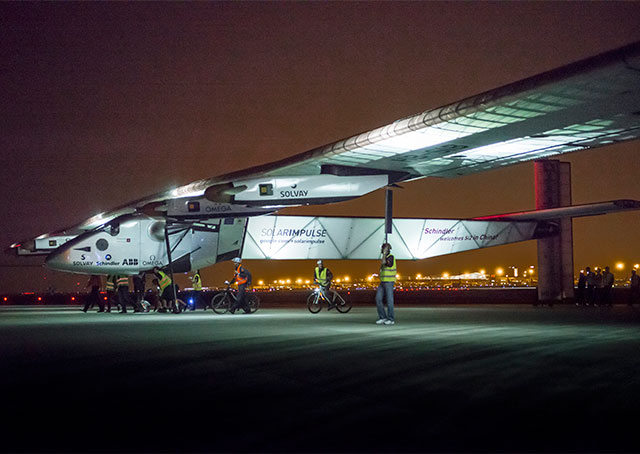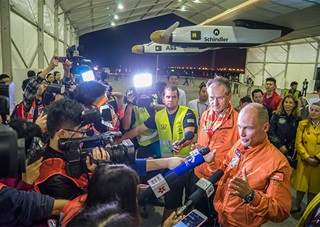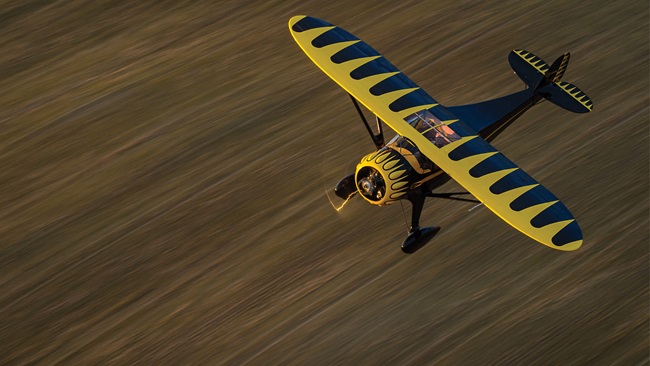
Swiss pilot Bertrand Piccard completed the most demanding leg to date of the Solar Impulse 2 circumnavigation, landing in Chongqing, China, just after midnight local time on March 31—exactly 20 hours and 29 minutes after departing Myanmar. Team co-founder and fellow pilot André Borschberg was waiting with champagne, part of a welcoming committee on hand for the early morning arrival (at 1735 UTC on March 30).
The Swiss ambassador to China joined local dignitaries in greeting Piccard and his zero-fuel aircraft, which departed March 9 from the United Arab Emirates on a mission to promote renewable energy, and demonstrate the potential of solar aircraft power. The electric motors and instruments are powered by 17,000 solar cells that feed batteries, enabling Solar Impulse 2 to fly through the night.
“China has become number one in wind power and in solar panel production, and if you look at how much efforts the Chinese government is making to increase the use of renewable energy to optimize the energy mix, there is no surprise that Solar Impulse is so well received in the country,” the pilots said in a joint statement issued by the team.
The 742-nautical-mile journey from Myanmar required patience and oxygen: A steep climb for terrain was necessary at the outset, and Piccard cruised at a maximum altitude of 28,000 feet, with a maximum ground speed of 71 knots as he flew through the night, the following day, and again into the night. The landing was delayed by a combination of strong winds and the many other arrivals bound for Chongqing Jiangbei International Airport. Solar Impulse 2 weighs just over 5,000 pounds, including 2,077 pounds of batteries, with a wingspan roughly equal to a Boeing 747, so wake turbulence avoidance is a must.

Piccard endured frigid temperatures of -4 degrees Fahrenheit (-20 degrees Celsius) at altitude, but enjoyed a warm reception at the airport. The team’s stay in China will include a variety of events, including a chance to meet 1,600 students at a local secondary school.
“We are very glad to collaborate with Solar Impulse to popularize edgy scientific knowledge among Chinese Youth,” said LIU Yadong, deputy director general of the China Association of Science and Technology, in a news release.
In addition to a robust website, the Solar Impulse team also has established a strong social media presence and released apps on Google Play and iTunes that allow users to track the round-the-world flight, including access to live telemetry during flights. The team also is promoting a related website dedicated to clean fuel for the future.
Borschberg will fly the next leg to Nanjing, China, as the pair trade off flying duties. That flight will be comparatively short at 642 nm. The following flight will be the real test of pilot endurance, covering 4,412 nm from Nanjing to Hawaii in an estimated 120 hours. The team plans additional U.S. stops in Phoenix and New York, with another stop in the Midwest at a location yet to be announced.



